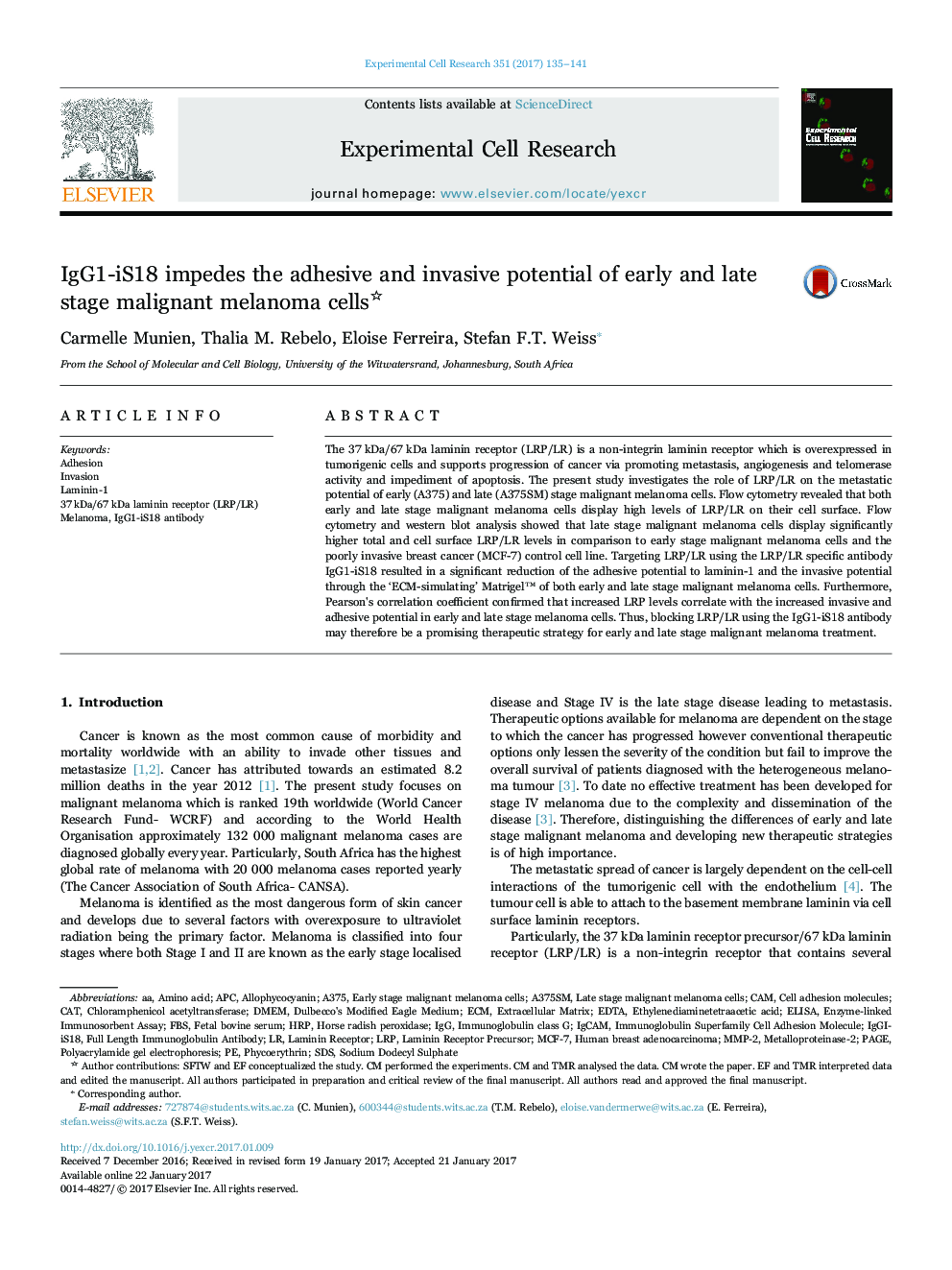| کد مقاله | کد نشریه | سال انتشار | مقاله انگلیسی | نسخه تمام متن |
|---|---|---|---|---|
| 5527268 | 1401575 | 2017 | 7 صفحه PDF | دانلود رایگان |

- A375SM cells have higher cell surface and total LRP/LR levels compared to A375 cells.
- A375 cells have lower adhesive and invasive potentials compared to A375SM cells.
- IgG1-iS18 significantly decreases adhesion and invasion of both early (A375) and late stage malignant melanoma cells (A375SM).
- IgG1-iS18 antibody was most effective on the metastatic late stage malignant melanoma cells.
- IgG1-iS18 may act as a promising alternative therapeutic for treatment of early and late stage malignant melanoma cells.
The 37 kDa/67 kDa laminin receptor (LRP/LR) is a non-integrin laminin receptor which is overexpressed in tumorigenic cells and supports progression of cancer via promoting metastasis, angiogenesis and telomerase activity and impediment of apoptosis. The present study investigates the role of LRP/LR on the metastatic potential of early (A375) and late (A375SM) stage malignant melanoma cells. Flow cytometry revealed that both early and late stage malignant melanoma cells display high levels of LRP/LR on their cell surface. Flow cytometry and western blot analysis showed that late stage malignant melanoma cells display significantly higher total and cell surface LRP/LR levels in comparison to early stage malignant melanoma cells and the poorly invasive breast cancer (MCF-7) control cell line. Targeting LRP/LR using the LRP/LR specific antibody IgG1-iS18 resulted in a significant reduction of the adhesive potential to laminin-1 and the invasive potential through the 'ECM-simulating' Matrigel⢠of both early and late stage malignant melanoma cells. Furthermore, Pearson's correlation coefficient confirmed that increased LRP levels correlate with the increased invasive and adhesive potential in early and late stage melanoma cells. Thus, blocking LRP/LR using the IgG1-iS18 antibody may therefore be a promising therapeutic strategy for early and late stage malignant melanoma treatment.
146
Journal: Experimental Cell Research - Volume 351, Issue 2, 15 February 2017, Pages 135-141